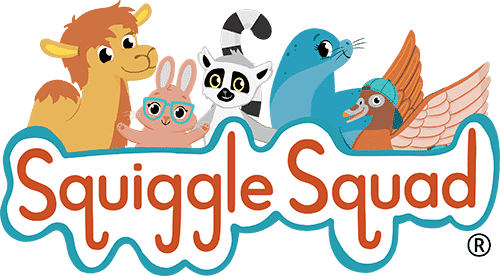Meet the Squiggle Squad!
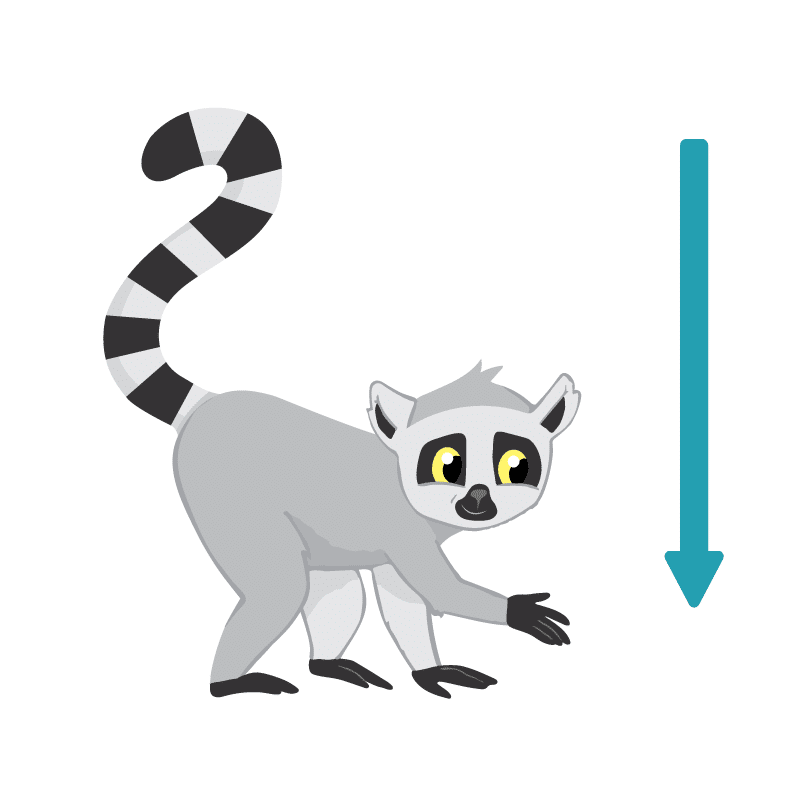
Lines the Lemur
Lines the Lemur represents a vertical line made (with arm, finger, or pencil) from top to bottom. It is found in letters such as d and t and the number 1. The vertical line- tall and short- is the most frequently used stroke in English manuscript (“ball and stick”) handwriting style. For this reason, the vertical line stroke is introduced first. Lines the Lemur motivates little learners to start at the top of the stroke and draw downward. As they improve their motor skills, new writers will develop straightness and the ability to stop at the bottom line of the writing space. As strokes are introduced, learners will visit this stroke frequently reinforcing the skill.
Bubbles the Bunny
Bubbles represents a counterclockwise circle that starts approximately where the 2 or 3 is on a clock face. It is found in letters such as a, o, and the number 9. Letters and numbers that require a counterclockwise circle are often mis-drawn leading to inefficient letter formation. By introducing Bubbles and the counterclockwise stroke early in the progression, new writers will have more opportunity to practice this sometimes-difficult stroke.
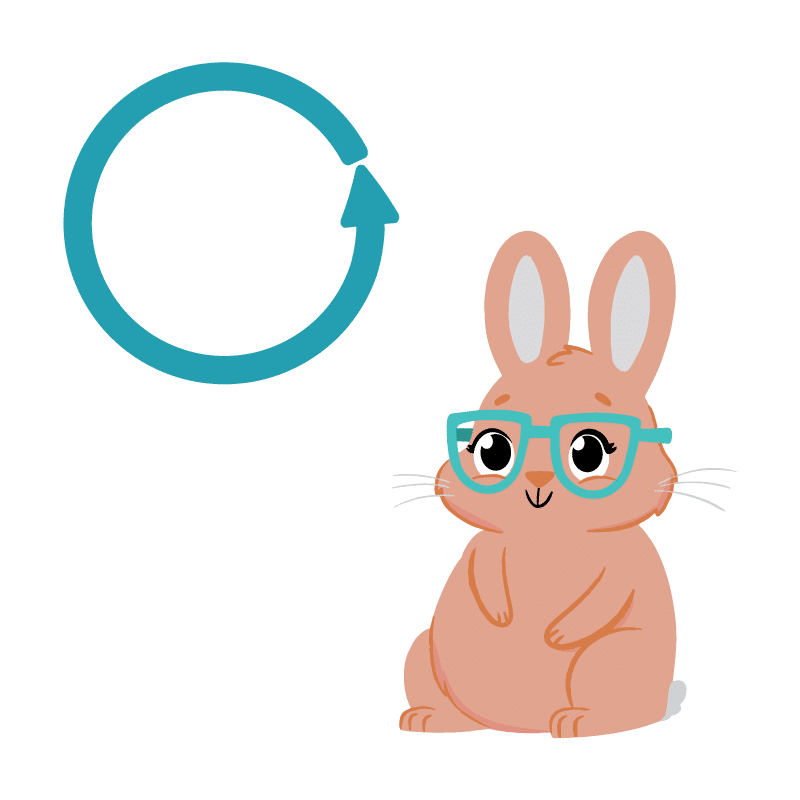

Curves the Camel
Curves the Camel is the first of the Squad to represent one shape written in three different directions. Curves’ stroke is, well, curved. It is found in letters such as b, h, u, and the number 3. Theses multi-directional curves introduce two writing directions opposite of the directions practiced with Lines and Bubbles, namely bottom to top and left to right movement. If students start with Lines and Bubbles, they will be familiar with the terminology and activities associated with Squiggle Squad handwriting practice and are ready to play with Curves!
Slide the Seal
Slide the Seal represents a diagonal stroke written two directions- left to right and right to left. It is most notably seen in the letter x, and in the number 7. The straightness of the stroke makes this one a little easier for students who have been practicing the curved strokes. While the angled direction can be a little tricky, kids get the hang of it pretty quickly playing with Slide the Seal!
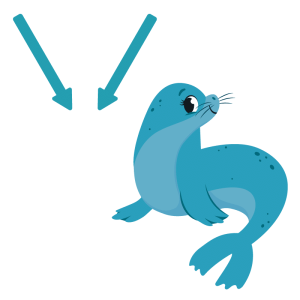
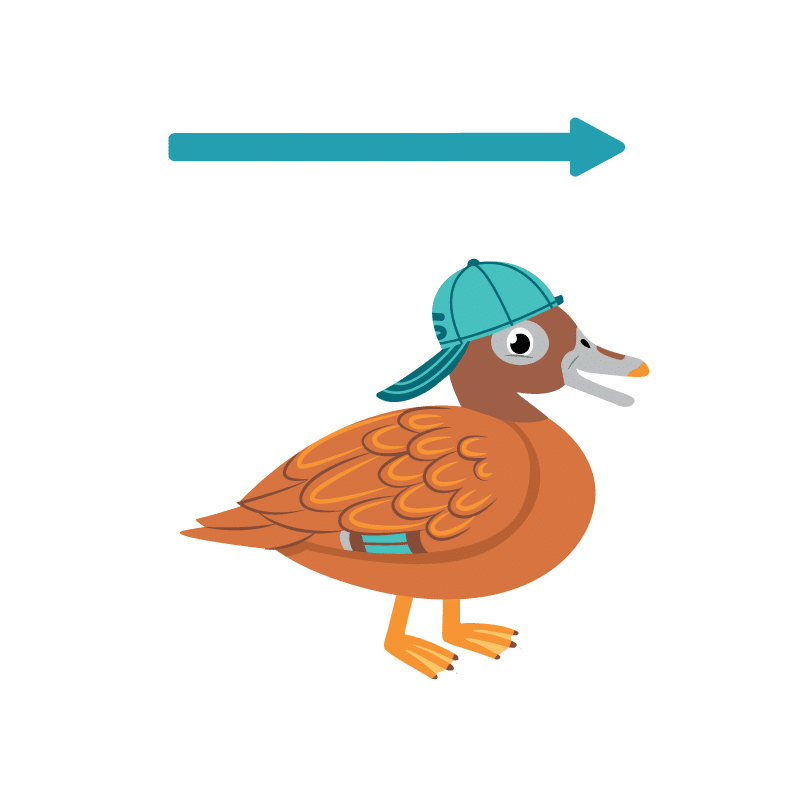
Dash the Duck
Dash the Duck represents a horizontal dash made left to right. It is used in a few lowercase letters such as e and f, and numbers such as 4. This stroke is also used quite a bit in uppercase letters. By this fifth stroke, learners have done lots of motor skill practice, so this single direction small stroke is easy to make…and kids really love Dash!
